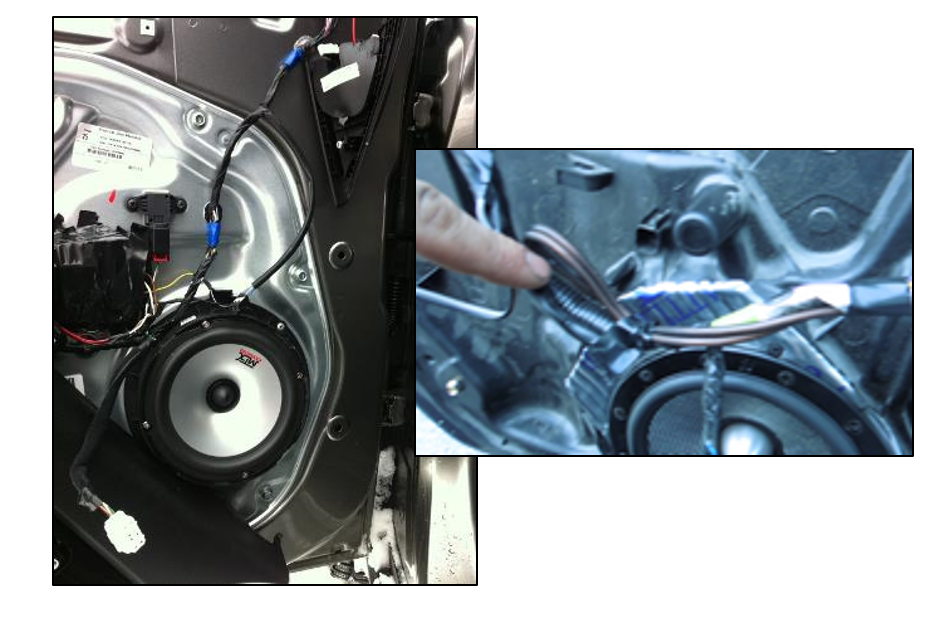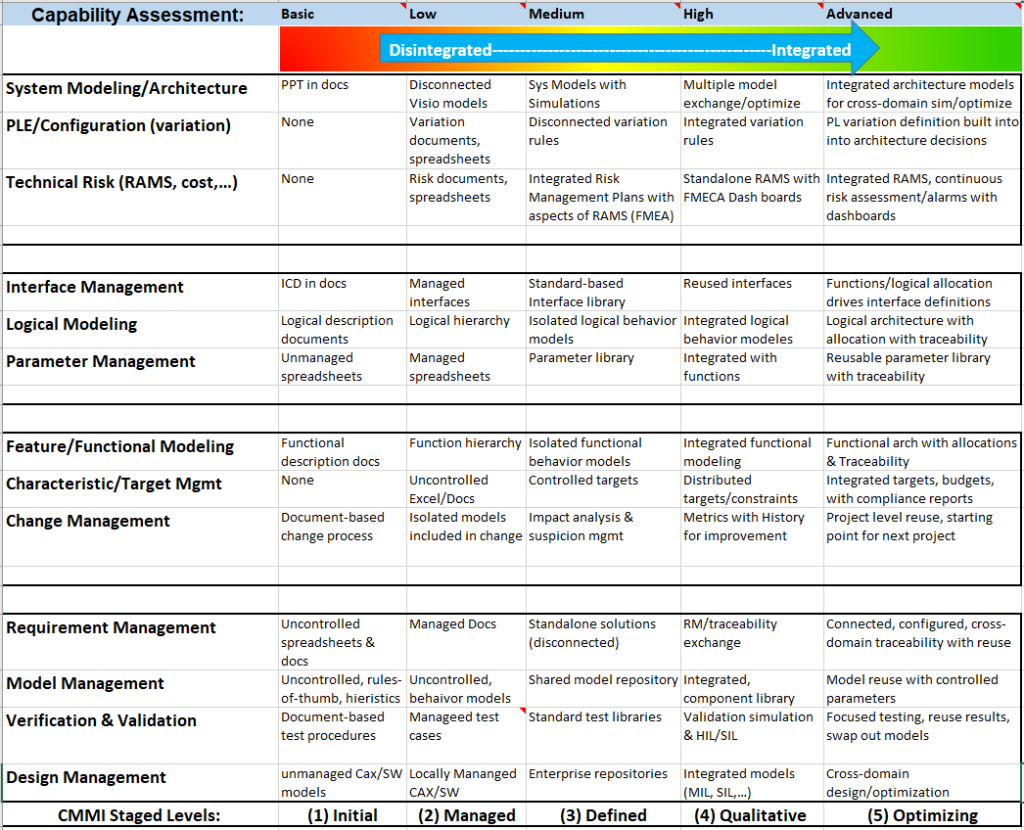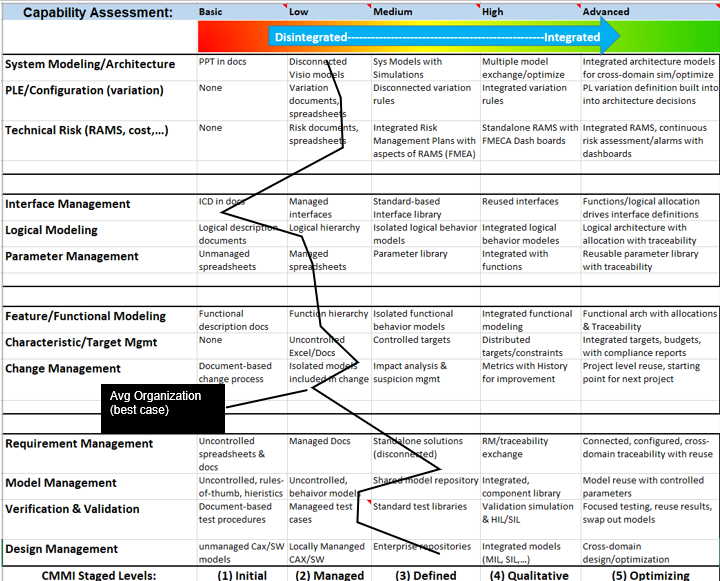Integrated MBSE Solutions: preventing insane product development


How does integrated MBSE solutions prevent insane product development? Well, you’re probably familiar with one definition of insanity attributed to Albert Einstein “…doing the same thing over and over and expecting a different outcome”. In our travels, we are surprised by the amount of design insanity going on in organizations… repeating costly mistakes over and over.
For example, I talked to one young automotive engineer who was given a customer complaint to track down… “water on the knee”. During the investigation, she discovered water would come through the door speakers when the bass was turned up. (we’ve all been pounded by the amped-up bass of a nearby vehicle’s woofers).
Looking inside the door, she found that water which should have drained harmlessly out of the weep holes in the bottom of the door was splashing up onto the speaker wire and following it down and into the speaker, leaving the bass vibrations to do the rest. Looking at the speaker wire’s revision history, she saw the previous version wire had a loop held by a tie wrap. The loop naturally carried the water below the speaker. From its history, she saw the speaker wire revision switched back and forth between loop/no loop on about a 6-month cadence.
Of course, you know what happened, someone looking at extra wire length, cost, etc., and not understanding the reason behind it eliminated the loop saving a few pennies but causing the problem to return—i.e. insane design behavior.

That got us thinking about how much insane design behavior is going on in organizations repeating the same mistakes over and over or “how long does a problem once solved take to come back”. Our research mirrored industry project lengths:
- 3 years in automotive
- 6 months in high-tech
- 15 years in aerospace
This makes sense as the problem is experienced by people, the lessons they’ve learned leave with them when they move onto other projects (a major concern if they are retiring). Naturally, the electrical engineer designing the wire harness isn’t concerned about keeping the passengers dry, that’s another domain’s problem, so we have these boundary/cross-domain problems that can’t be taught except by experience. When the experience leaves, the problems have a tendency to come back (giving Wheelwright and Conway a way of predicting reoccurring systemic cross-domain, cross-organization issues).

Of course, systems engineering is in the business of preventing these cross-product problems. Using ISO-15288 systems engineering standard, you can see what systems engineers do. If they are not done in a scalable, integrated/connected way, you end up repeating the problems—i.e. insane design behaviors. As you look at this sampling of cross-domain problem sources, they are related to what systems engineering is equipped to address >>>>>>
So using a standard systems engineering process supported by MBSE solutions, we thought about how we could use it to measure how insane our product development processes are to identify how/where we could improve to prevent these reoccurring problems, improving organization mental health in the process.
Looking at the MBSE Maturity Matrix below, each of these standard process elements could be accomplished in a variety of ways from a disconnected way in documents, spreadsheets, standalone requirements, and modeling tools up through a connected way where individual SE artifacts are part of the product lifecycle subject to standard PLM practices like configuration, change, variation, etc.–giving us a way to see how disconnected or connected we are; measuring our proclivity to insane design behavior of repeating the same design mistakes over and over.

We want to move from disconnected to connected/integrated because disconnected/isolated SE artifacts don’t scale to current product complexity that demands development move at the speed of thought–I don’t know of any other discipline where making no decision is a decision as everyone else is moving on with or without you! You can see the consequences/cost of disconnected MBSE with your current disconnected standard practices that consumes half of your program schedules on system integration issues.
We’ve done enough of these quick, 30-minute assessments in many different industries to realize everyone is insane and subject to repeating design problems over & over…

We should point out this is a positive model, that is we ask respondents to think about the best practice they’ve seen in their organization. So, if this is the best, imagine what the problem projects look like.
The first step in any recovery is recognizing there is a problem. So, join one of our Integrated MBSE webinars where we talk about a journey from design insanity to sane design practices that have the potential to cut your product integration cycles in half.
Teamcenter MBSE solutions
We’ve applied this integrated MBSE assessment in various industries and academics in various webinars recently:
- Integrated MBSE: Integrating Systems Engineering with the product lifecycle Includes introduction to our new MBSE Curriculum and MBSE Education Whitepaper.
- Accelerate Aerospace Development with Integrated MBSE Solutions
- Accelerate Automotive Product Development with Data Traceability
- MBSE For Dummies, Siemens Special Edition is a free guide to using complexity to your advantage
…which should give you a sense of its power to help you on your integrated MBSE journey.
You can also drop us a line and we’ll be glad to do a 30-minute assessment. In exchange for your honest answers of where you are today, we’ll send you your MBSE Maturity Assessment along with how you compare with others in your industry (anonymous of course).
If you’re interested in learning more about model-based systems engineering solutions, check the other blog posts we have and dig into more information on the website.
–Mark Sampson


